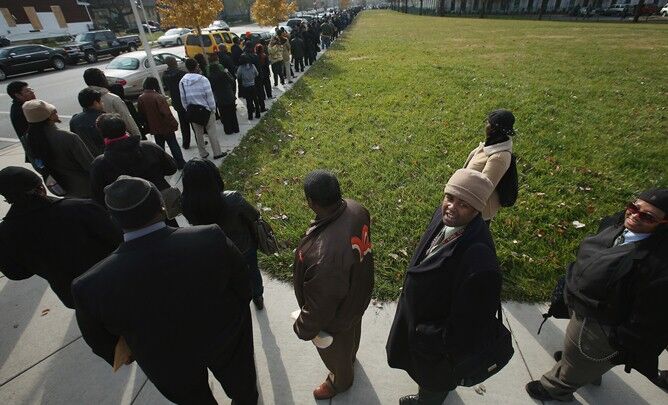
Where Are the Jobs?
The U.S. Bureau of Labor Statistics’ January 10 report on the U.S. job situation was an “absolute and total complete disaster” says University of California, Berkeley, economist Brad DeLong. The report revealed that a meager 74,000 jobs were added in December—far lower than the 200,000 hoped for.
Some economists, however, brushed aside these findings as being inaccurate or incomplete. For example, some blamed the polar vortex for keeping some job seekers from going out to look for jobs involving outdoor work like construction. But the statistics also showed notable declines in employment in sectors like healthcare and information, which are unaffected by the weather. Others say the government will probably revise the numbers up once they have more information.
But December’s numbers were bothersome for several reasons, not the least of which is that employment is still about 2 million below where it was when the recession started in 2008. December is typically a month of strong hiring because of the economic-driven holiday season. Yet the statistics for that month busted a four-month trend of robust hiring from August through November. Making the numbers even weaker was the fact that, as Breitbart’s Mike Flynn observed, well over half—40,000—of the 74,000 jobs added to the economy in December were in temporary employment.
And for men seeking work, the jobs report was an even bigger disaster. The net gain of 74,000 jobs breaks down to 75,000 jobs gained by women, and 1,000 jobs lost by men.
While the Labor Department’s report noted a decrease in December of the unemployment rate from 7 percent to 6.7 percent, this figure is largely a result of people giving up the job hunt entirely. According to the government, you are only “unemployed” if you are still trying to find employment. That doesn’t accurately reveal the reality of the job situation.
A better indication of U.S. unemployment is the U-6 rate, which factors in the unemployed, the underemployed as well as the discouraged. Unlike the regular unemployment rate, this figure did not improve in December—it remained unchanged at 13.1 percent. According to DeLong, it is these long-term unemployed—along with America’s shrinking labor force—that shows just how disastrous this “recovery” has been for the typical American.
Over the past year, the population of the U.S. rose by over 2 million, yet the labor force declined by over a half a million. Zero Hedge points out that December’s labor participation rate “dropped to a fresh 35-year low, hitting levels not seen since 1978.”
Meanwhile, political bickering continues on Capitol Hill. Democrats are saying that December’s dismal employment report shows the need for the federal government to extend unemployment benefits to job seekers. Republicans are using the same figures to make the point that unemployment insurance is not doing much to help the job situation.
The fact is, the U.S. economy is in bad shape. It is imperative that you make sure your financial house is in order. Strive to get a job and to keep your job. Save. Simplify your life. Stay out of debt, and live within your means.
To help you with any of these points, we’d like to offer you a formula for financial success: Solve Your Money Troubles! You can read it online, or receive a copy in your mailbox for free if you simply ask for it.
